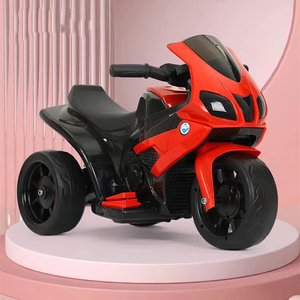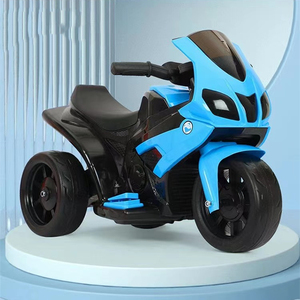(231507 products available)


































































 Ready to Ship
Ready to Ship






































































































































There are many sales toys, each designed for specific ages, developmental stages, and purposes. Here are some common types:
Action Figures and Dolls
These are toys that resemble people or animals. They include action figures, baby dolls, and pet figures. Children can pretend to be these people or animals. They can make up stories and play different roles.
Building and Construction Toys
These include building blocks, LEGO sets, and construction kits. They allow children to build and create different structures. The toys help in developing fine motor skills and hand-eye coordination.
Educational Toys
These toys help children learn new things. They teach math, science, or language skills. The toys can also teach concepts like shapes, colors, and numbers. They include puzzles, learning tablets, and STEM kits.
Electronic Toys
These toys use batteries or plug into a power source. They include robots, remote-controlled cars, and interactive pets. Electronic toys are more engaging. This is because they can make sounds, lights, and movements.
Outdoor Toys
These toys are meant to be used outside. They include bicycles, scooters, and sports equipment. Outdoor toys encourage physical activity and social interaction.
Role Play and Imaginative Toys
These are toys that allow children to role-play and use their imagination. They include kitchen sets, tool sets, and doctor kits. These toys help children develop social skills and learn about different professions.
Arts and Crafts Toys
These toys allow children to be creative and make art. They include coloring books, clay kits, and jewelry-making sets. Arts and crafts toys are relaxing and help children express themselves.
Ride-On Toys
These toys are for younger children. They include toy cars, animals, and wagons that one can sit on and ride. These toys are fun and help children improve their balance and coordination.
Target Audience
Understanding the target market is essential when choosing a sales toy for a business. This involves gathering information about the age, gender, interests, and purchase intentions of the customers. For instance, if the target audience is children, the sales toy should be entertaining, colorful, and easy to use. However, if the target audience is adults, the sales toy should be practical, unique, and helpful. Knowing the target market will allow business owners to select a sales toy that meets the customers' needs and preferences.
Budget
When choosing a sales toy, business owners must consider their budget. This involves determining the total cost of the sales toy, including the purchase cost, shipping, and any other additional costs. Business owners should also consider the long-term costs of using the sales toy, such as maintenance and replacement costs. To save money in the long run, choose a durable sales toy that can withstand frequent use and has minimal maintenance requirements.
Customization Options
Customization options can enhance the effectiveness and uniqueness of a sales toy. Therefore, choose a sales toy that can be customized in various ways, such as printing a logo, adding a slogan, or changing the color scheme. Customization can help the sales toy become more memorable and create a strong brand identity. Additionally, look for sales toys that can be easily adapted to suit different customer preferences and market trends. This will ensure the sales toy remains relevant and attractive to customers over time.
Environmental Impact
As environmental issues become more popular, choosing a sales toy that aligns with sustainable practices is essential. Look for a sales toy made from eco-friendly materials, such as recycled plastic or biodegradable materials. Additionally, consider the sales toy's life cycle, from production to disposal. Choosing a sales toy that has a minimal environmental impact will improve the company's image and attract eco-conscious customers.
Toy sales have many features and designs that can be customized to meet different needs and preferences. Here are some common features:
Regarding designs, toys can also be categorized based on their designs, which contribute to their appeal and functionality. Here are some design-related categories:
The safety and quality of sales toys are paramount as they directly affect the children's development and their happiness. Safety is the most important factor when choosing a ideal toy. One must ensure that the toy is made of non-toxic materials that do not contain BPA. Additionally, the toy should not contain small parts that could be a choking hazard for younger children. Other features to look for that enhance the safety of the toy include smooth edges and a sturdy construction that can withstand vigorous play.
Quality is the next most important factor when selecting a sales toy as it affects the longevity and the level of enjoyment it will provide. A quality toy is made of durable materials that can endure regular use and rough handling. It is also well-constructed with no loose parts or seams that could come apart over time. Moreover, quality toys are designed to be easily cleaned and maintained, ensuring they remain safe and hygienic for children to use.
In addition to these factors, it is also essential to consider the developmental benefits of a sales toy. For instance, toys that promote active play, such as outdoor sports equipment or building sets, can help children develop physical skills and coordination. Similarly, toys that encourage imaginative play, such as dolls or action figures, can help children develop social skills and creativity. To sum up, when choosing a sales toy, safety, and quality should be the top priorities. By selecting toys that are safe, durable, and beneficial for development, one can ensure that children have a fun and enriching play experience.
What is the ideal age range for toys?
Toys are designed for various age groups, typically ranging from newborns to 12 years old. For example, infants and newborns are the ones that mostly use rattles, soft plush toys, and colorful mobiles. On the other hand, toddlers between the ages of 1 and3 years old can play with building blocks, shape sorters, and interactive toys. Moreover, preschool children aged 3 to 5 years old engage in imaginative play with dolls, action figures, and art supplies. Further, children between 6 and 12 years old can play with board games, puzzles, and STEM-related toys.
How are toys categorized?
Toys are categorized into different types based on their characteristics. For instance, educational toys are intended to facilitate learning and cognitive development, such as puzzles and building blocks. Also, electronic toys incorporate technology features like lights, sounds, and interactive functions, for example, robotic pets and tablets. Moreover, outdoor toys are designed for active play outside and include sports equipment, kites, and sandcastle-building sets.
Which toys are the safest for younger children?
Toys that are safe for younger children are made of non-toxic materials, free of small parts that can be choking hazards, and have smooth edges to prevent cuts. Additionally, such toys have passed safety standards tests and have no toxic chemicals or harmful dyes.
How can someone choose the right toy for a child?
One can choose the right toy for a child by considering the child's age, interests, and developmental stage. Also, the toy should match the child's personality and preferences, whether they enjoy arts and crafts, building, or imaginative play. Moreover, one should take time to read reviews and recommendations to get an idea of the toy's quality and durability.